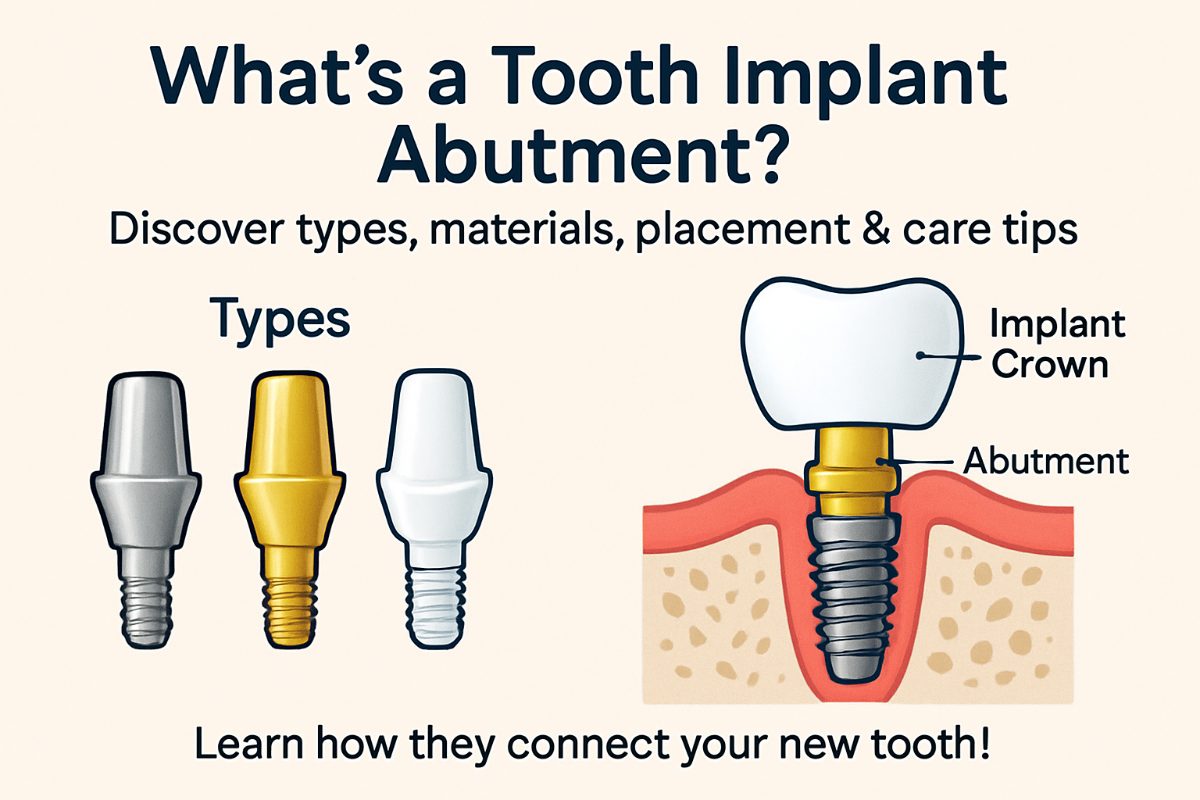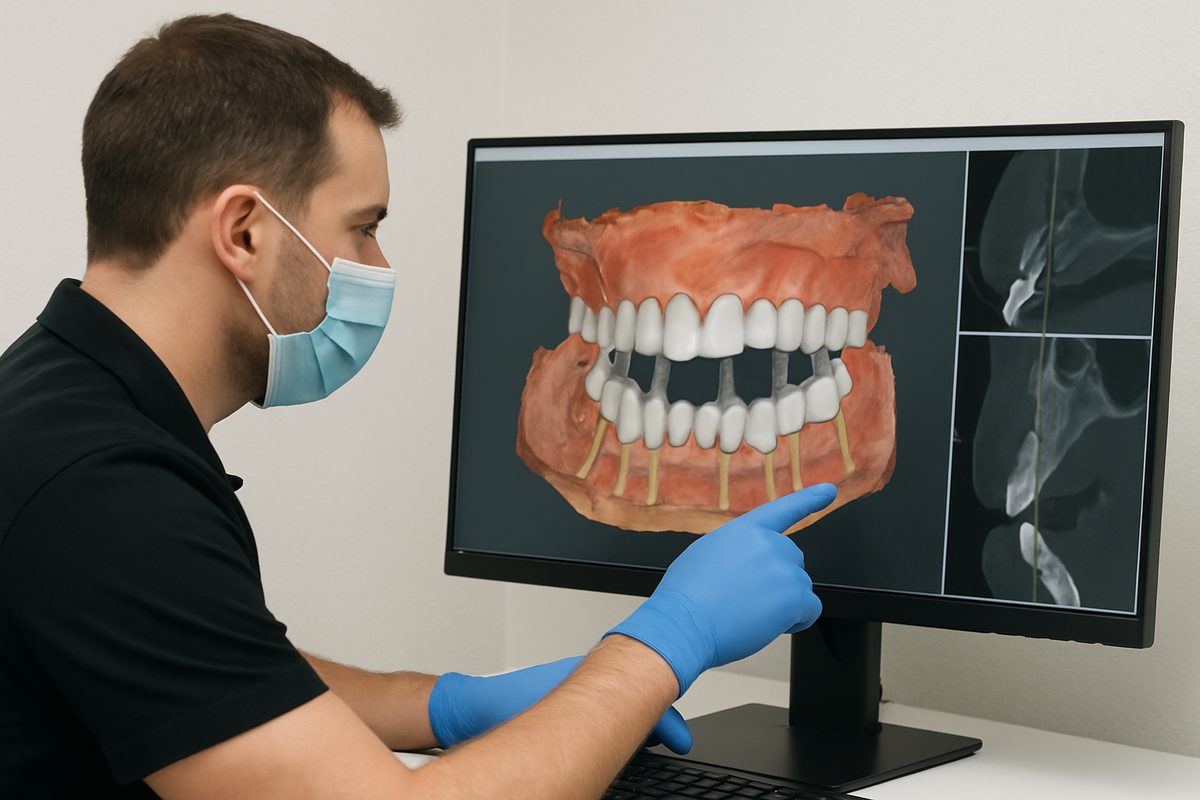Blog - [City], [state]
Tips, Facts, And The
Latest In Dentistry

Tooth Implant Abutment: What Is It? Do You Need One?
Posted in Dental Implants

A tooth implant abutment is the small but vital connector that holds your new tooth to the implant root. If you’re getting an implant, you’ll want clear, practical info about each part of the system, why different abutments exist, and what steps come next. This article explains what a tooth implant abutment does, the common types and materials, whether you need one, what to expect during placement, and how to care for it.
What Is a Tooth Implant Abutment?
A tooth implant abutment is the piece that joins the implant fixture (the metal “root” placed in the jaw) to the visible crown or bridge. Think of the implant as the anchor, the abutment as the connector, and the restoration as the finished tooth. The abutment keeps the crown stable, shapes the gum around the tooth, and helps the restoration look and function like a natural tooth.
Types of Tooth Implant Abutments
Stock vs. Custom Abutments
Stock abutments are prefabricated and come in common sizes. They work well when the implant sits in a straightforward position. Custom abutments are milled to match your specific gum shape and implant angle. Custom abutments give a better fit and often better esthetics, especially for front teeth or unusual anatomy.
Materials: Titanium, Zirconia, and Hybrid
Titanium abutments are very strong and commonly used for back teeth. Zirconia is tooth-colored and preferred for front teeth where looks matter and the gum is thin. Hybrid abutments combine a titanium base with a zirconia top to get strength and better esthetics. Your dentist will weigh strength, gum health, and appearance when picking a material.
Do You Need a Tooth Implant Abutment?
Most implant restorations use an abutment. Single-tooth implants, implant-supported bridges, and many full-arch systems rely on an abutment to secure the crown. Some one-piece implant designs don’t require a separate abutment, but these are less common. In short: if you have a conventional two-piece implant system, you will need a tooth implant abutment.
How Dentists Decide Which Abutment to Use
Dentists consider the tooth’s location, gum thickness, bite forces, esthetic goals, and implant angulation. Imaging tools like CBCT scans and digital impressions help plan the exact abutment design. These factors guide whether a stock or custom abutment and which material will give the best long-term result.
What to Expect During Abutment Placement
Placement is usually quick. The dentist may uncover the implant if it was covered, fit the abutment, and take an impression or digital scan. A temporary crown may be placed while the gum shapes around the abutment. Final restoration follows after the lab completes the crown. Expect mild discomfort and short healing times; most patients return to normal activity within a few days.
Caring for Your Abutment and Restored Tooth
Brush twice daily, floss with a threader or use interdental brushes, and avoid very hard foods right after placement. Watch for looseness, persistent pain, swelling, or bleeding. Regular checkups and cleanings help keep the abutment and implant healthy.
When an Abutment May Need Repair or Replacement
Common issues include loose screws, damaged crowns, esthetic concerns, or gum disease around the implant. Many problems can be repaired—tightening screws, replacing crowns, or, if needed, remaking the abutment to improve fit and appearance.
Why Choose a Modern, Technology-Driven Practice for Implant Care
Advanced imaging and digital planning improve abutment selection and long-term outcomes. Dental Arts of Oklahoma uses CBCT imaging, digital scans, and modern implant planning (including All-on-4 protocols) to match the right tooth implant abutment to each patient’s needs. Dr. Soren Michaelsen focuses on precision and comfort, which matters when choosing the correct abutment and final restoration.
Next Steps: How to Find Out if You Need a Tooth Implant Abutment
Schedule an exam with imaging and a consultation to review abutment options. The right tooth implant abutment improves fit, appearance, and the long-term success of your implant—so get a professional plan before moving forward.




